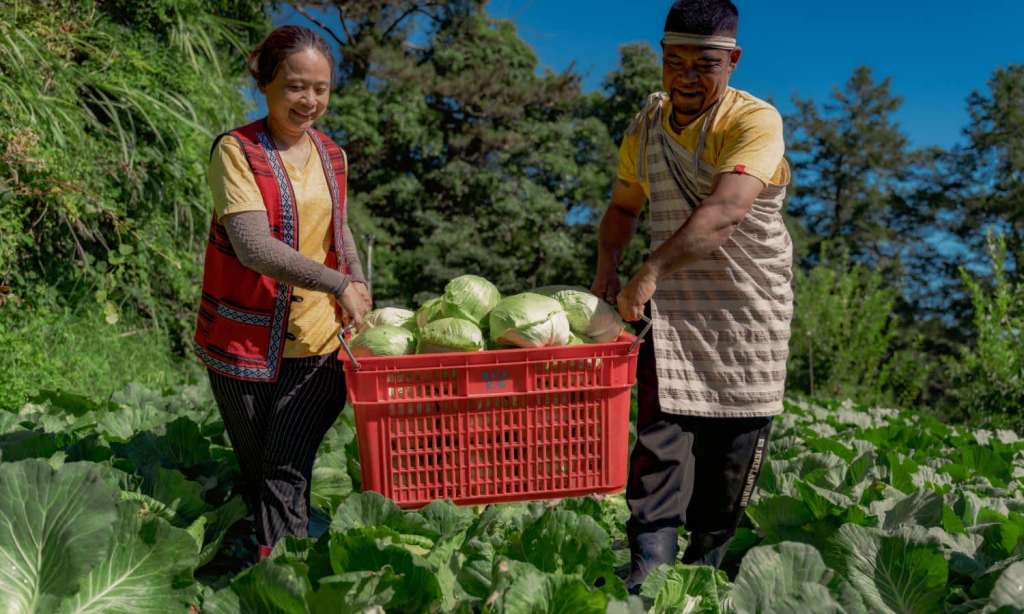The Latch has partnered with Suncorp Bank to deliver the sustainability content you need when planning your next trip.
Before we start discussing this nebulous term, community-based tourism, and how we can participate actively and mindfully in it, it might help to rule out what is unlikely to be community-based tourism.
Firstly, community-based tourism is certainly not centred on *you*. This means yoga retreats in exotic places led by foreigners, one-off construction, charity, and conservation efforts that divert attention away from the community and back to the individual are unlikely to be good examples.

While it might seem logical that travelling will directly benefit the local economy in one way or another. Most of us are too far removed from the supply chain of tourism to understand the individual nuances of our trip, from flight tickets to hotel stays. This is possible because of the number of intermediaries, prevalent greenwashing and the lack of awareness of where our dollar goes.
How then do we then verify the authenticity of community-based tourism projects? We turned to the experts — Roi Ariel, General Manager at Global Sustainability Tourism Council in Taiwan and Chalana Perera, Founder of ReTrace Hospitality in Sri Lanka — to learn from their experience in the field.
Ariel puts forth a definition penned by Richard Denman and published in WWF International; Community-Based Tourism (CBT) is a concept that means “the local community has substantial control over, and involvement in, its development and management, and a major proportion of the benefits remain within the community”. As a tourism practitioner, he has noticed that though CBT has gained popularity in the last decade to diversify a community’s income, it is not a surefire success for many. He observes that, “just like opening a business, some are successful, and some are not”.
When using this definition, Ariel emphasises that CBT is a framework developed for communities, and not necessarily a tourism segment. Many communities develop many ecotourism, agro-tourism, and adventure tourism products, and thus, there is an overlap in tourism offerings. Ariel warns that although CBT programs should be sustainable, it’s not always the case. CBT may or may not be socially responsible. CBT may or may not be sustainable. It is our duty as consumers to check and decide what we want to experience.
Related read: What Is Eco-Tourism and Why Is It Important for Our Planet’s Future? We Explain
As with any new experience, you should visit and undertake the experience, “with an open mind and a clean slate”, Ariel suggests.
Representation Matters
When you choose to buy from a tour, take the initiative to find out who owns, runs and operates the business. How big a portion of that is indigenous or local people?
Ariel identifies that there is a prevalent type of CBT, where external organisations join forces with the local community for a set term. In this case, the economic benefit is divided between inside and outside of the community, due to economic leakage. However, this enterprise type makes CBT development easier as it links with markets and outside capital, and usually involves structured training and skill development in the community.

It is inevitable and common for foreign intervention to exist within the business for funding or expansion. But, it is important to draw attention to the voice of the business — do the locals have a say and direct benefit from the business as equal partners as the foreigners? Just like we look out for certifications of authenticity in food products, we can bring the same critical eye to tourism businesses by analysing the different players before signing up for an experience.
In the golden era of the internet, this information is usually explained on the website or on-site at the destination. In the case that there is no such information, you could also call up the company, or speak to locals to find out from them, their first-hand impressions and experiences of working with the company.
Regeneration and Renewal
Perera from ReTrace Hospitality makes a good case for the importance of regeneration in any kind of travel activity, including community-based travel. He shares his understanding of the term, which originates in biology and is defined as the process of renewal, restoration and growth after the loss or damage of a cell, organism or ecosystem. In the case of regeneration in tourism, Perera adds that, “it has to translate to doing better on a holistic and systemic level, such that the business facilitates and delivers continuous improvement for all stakeholders over the business lifecycle.”
Related read: What Is Regenerative Travel and How Do You Do It?
It’s clear that community-based tourism, when done well, is an effective form of regenerative tourism. It builds back into the community by providing more than what has been taken from it. As guests, we can see tangible outcomes for this over time in living conditions, wages, women empowerment, education levels, and sanitary levels.
“CBT is best practised with longer-length of stays in one location (not just a few nights on a multi-stop trip) and requires pre-arrival contact between host and guest,” Perera says. “Travellers or guests should try to develop friendships or strong bonds with their hosts, and ideally maintain relationships post-stay, and repeat visitations”
This upkeep of the relationship is done via social media, emailing, newsletters, ongoing monetary support or even recommending the experience via word of mouth to someone else.
Responsibility
When we accept that we have an active role to play in ensuring the travel is a vehicle for good, we start to take responsibility for our actions. This is a wonderful mindset to approach community-based tourism with because it fosters a reciprocal relationship between both parties that’s centred on respect. This responsibility also means taking ownership and calling out any actions that we find to be disruptive or hurtful to local communities by other guests, for starters.

Being responsible when engaging in CBT also means, researching, preparing and setting the time aside to truly experience an activity. Perera claims that this process would be, “an antithesis to the bucket-list and box-ticking culture, or jumping to the next place suggested on Instagram Reels”.
Although all of this might potentially sound extensive or cumbersome, it will ensure that the experience is meaningful for you. When done well, community-based tourism has the potential to build long-lasting relationships that can impact someone long after the experience is over. That is the power of people from different sides of the world connecting with intention.
Read more stories from The Latch and subscribe to our email newsletter.







